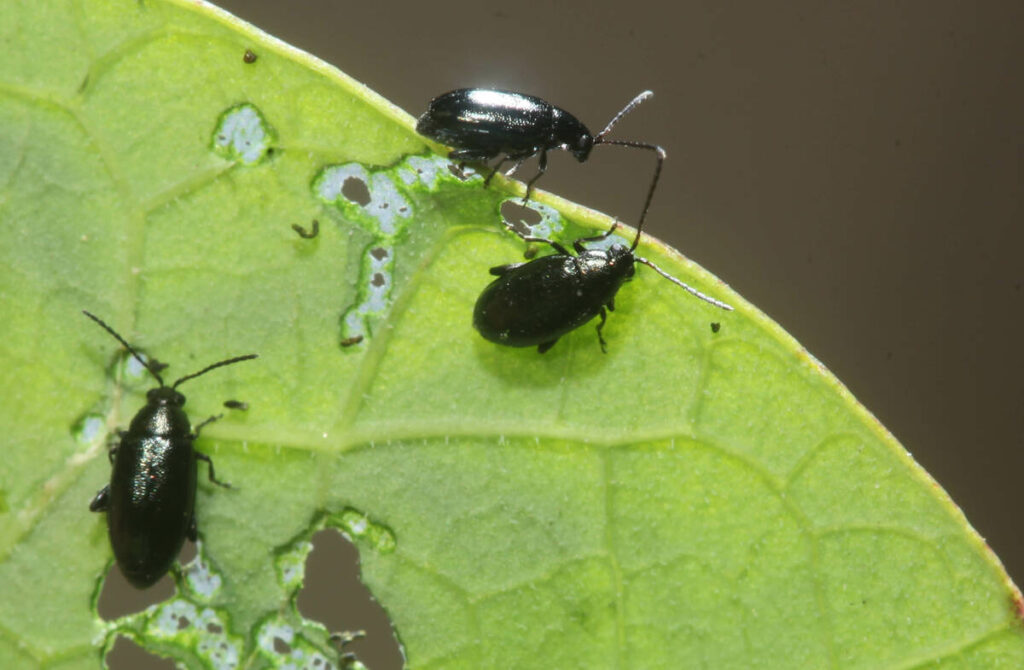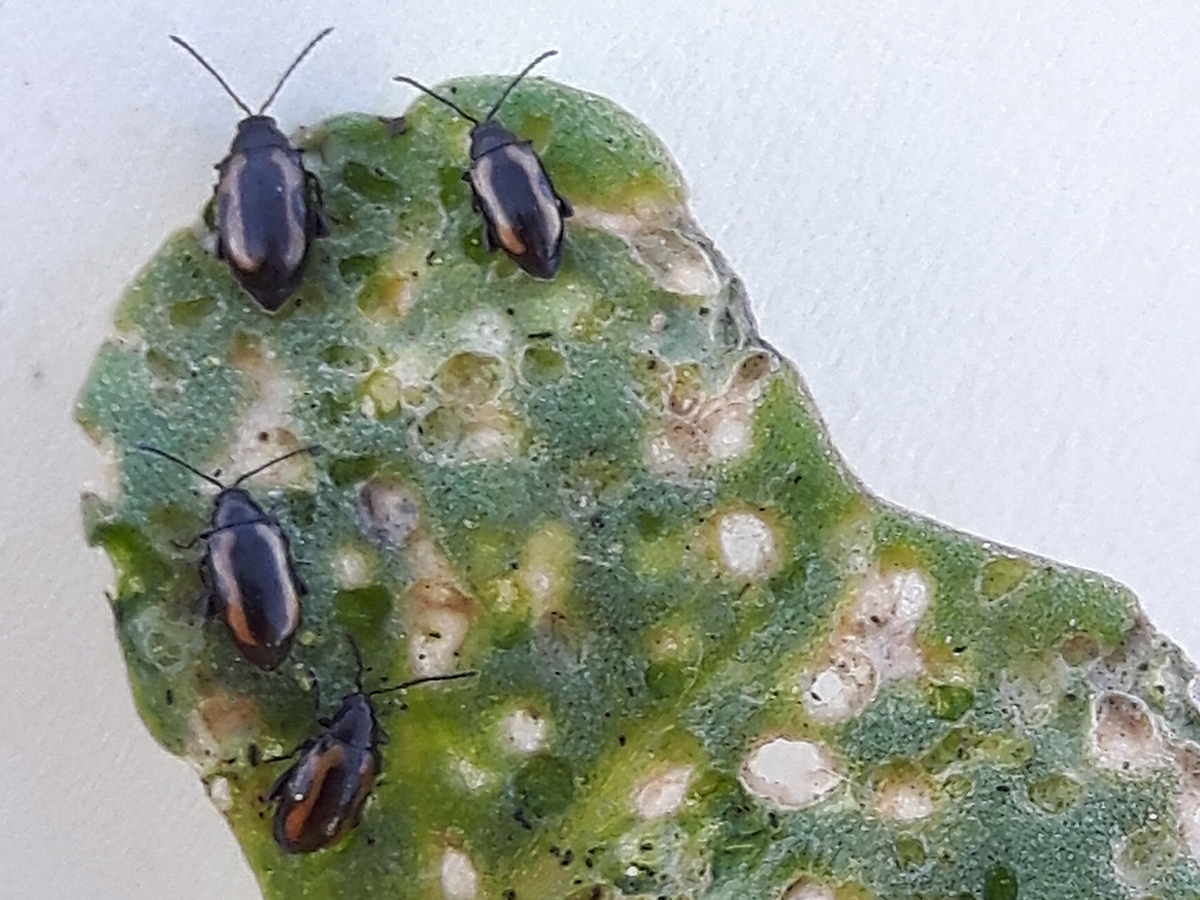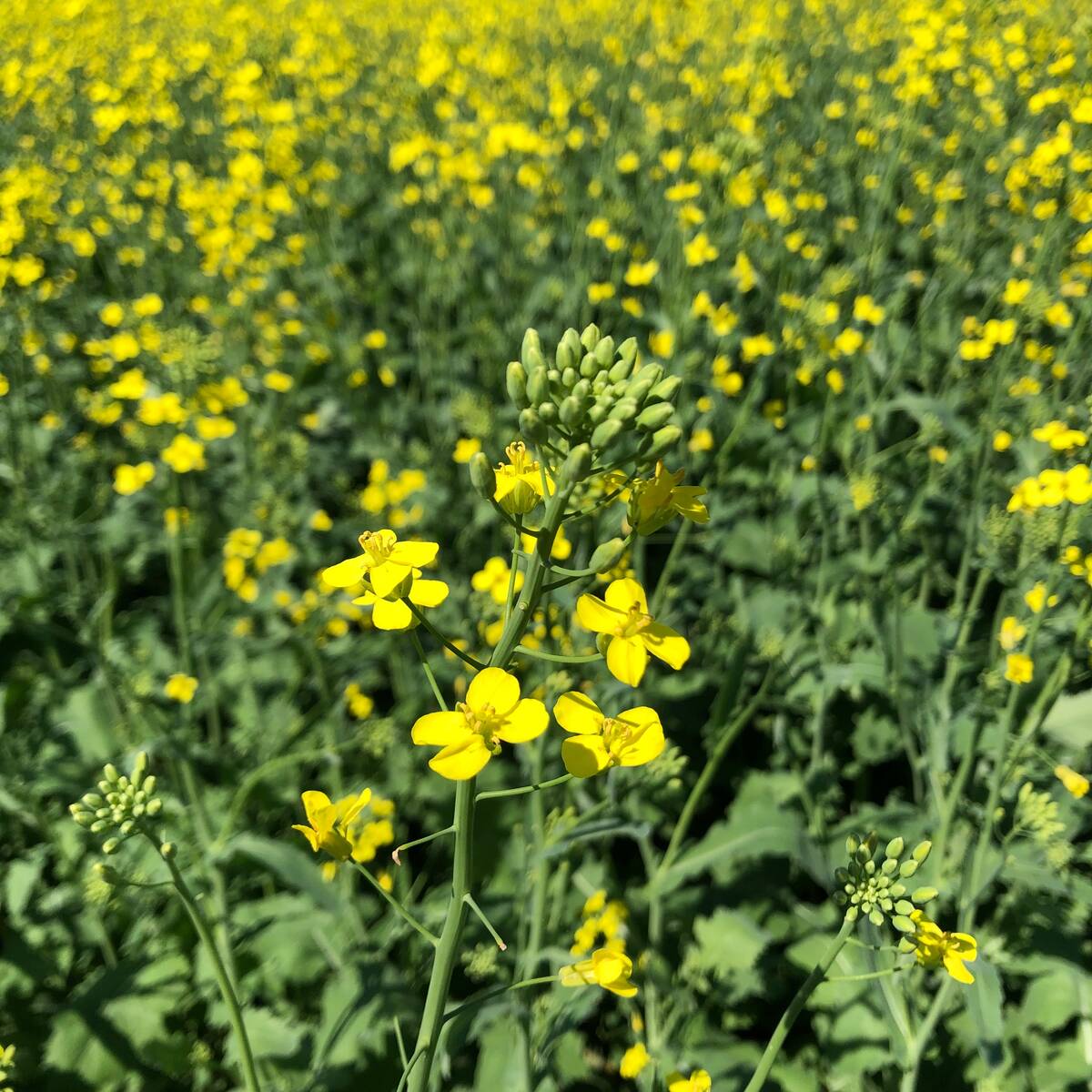Good agronomy urged under uncertain canola market

Glacier FarmMedia – Prices are down, and China has placed 100 per cent tariffs on Canadian canola oil and meal.
It may be enough to make even the most dedicated grower of the yellow flower wonder ifit’s worthwhile seeding a canola crop this year.
But as MarketsFarm analyst Bruce Burnett says in a recent Alberta Farmer Express article, “it’s not like there’s a magic commodity that you can switch to that would be instantly profitable if you’re trying to replace your canola acreage.”
Read Also


Canola can be protected from flea beetle threat
Flea beetles wreak around $300 million in damages annually across the Prairies and were named the greatest economic risk to canola by last year’s Canola Council of Canada grower survey.
The best option for canola producers may be to apply agronomy practices that can improve profits for little to no added cost, says the Canola Council of Canada, which earlier this spring posted the article, “9 agronomy tips to help increase canola profit” on its website.
They included:
Know the appropriate target plant stand
The “five to eight plants per sq. foot” rule has been a plant stand recommendation for canola for about as long as canola has existed.
Some recommend targeting the lower end of that range when seed costs are high and the crop selling price and yield are low. However, it’s essential to not go too low, the council says. Plant populations lower than five per sq. foot can compromise yield. Also, thin stands are more vulnerable to flea beetles and weed competition.
Target uniform seed emergence
Prioritizing a uniform plant population, in both the field and crop staging, can get a high-yielding crop off to a good start.
There are many ways to achieve this, but a few prominent methods include seeding into warmer soils, being mindful of proper seeding depth, levelling the drill and limiting seed-placed fertilizer. Keeping seeding tools well-maintained and slowing down when seeding also help.
Ideally, producers should seed into soil temperatures of 5 C or higher, particularly if there’s a good chance of warmer weather in the forecast. This should create “reasonably” good rates of seed survival and emergence, Jason Casselman, a canola council agronomy specialist at Fairview, Alta., said in an email.
Seeding at one to one-and-a-half inches below the packer furrow is the recommended seed depth for canola. This canreduce days to emergence as well as the seed energy necessary to emerge, he says. A depth of one inch is also the recommended start point in dry soil.
Levelling a seed drill calls for knowledge of the tool’s seeding depth range. For example, the overall seed depth average of a given drill may be one inch, but the range could be zero to two inches.
“The result can be highly variable emergence date, reduced seed survival and an uneven field,” Casselman says.
“Follow the operator’s manuals to level the drill, check that openers are in good shape and inflate tires to the same pressure.”
Be mindful of how much fertilizer you’re placing in the seed row, he adds, because seed-placed fertilizer can increase seedling mortality. Limit seed-placed fertilizer to phosphate fertilizer at rates of up to 20 lb. per acre.
Choose seed with disease resistance
If you have fields with yield-robbing levels of blackleg, be sure to use blackleg-resistant canola varieties that match the blackleg races in that field. The council website can help producers find labs that test stubble for race and also features a list identifying cultivars with blackleg-resistant genes.
Clubroot-resistant cultivars and higher sclerotinia stem rot tolerance can help reduce yield loss with relatively little additional cost, the council says. However, resistant cultivars aren’t the only tool in this particular toolbox: starting off with more plants per sq. foot and an improved seed treatment may offset some need to spray.
Manage flea beetles with plant density
Much the same can be said for flea beetle management. If you’re planning one or more flea beetle sprays, target a higher number of plants per sq. foot. That, plus an improved seed treatment, may also offset the need to spray.
Meet crop needs for fertilizer
Generally speaking, you don’t want to cut fertilizer rates. While doing so may reduce upfront costs, the chances of improved profitability at season’s end are remote.
“Fertilizing for a 50 bu. per acre target yield is usually more profitable than fertilizing for a 40 bu. per acre target yield, as long as weather allows crops to get close to those targets,” the council says.
Casselman again recommends limiting seed-placed fertilizer to minimize seedling damage.
For soils with low to medium phosphorus levels, he suggests placing a starter rate in the seed row (15 to 20 lb. of phosphorus pentoxide, the equivalent of around 30 to 40 lb. peracre of monoammonium phosphate.)
“Soil tests will often recommend a higher rate of phosphorus for canola, so the balance is best added into the fertilizer blend placed outside the seed row,” he says.
The risk of seed-placed fertilizer comes from the nitrogen component of ammonium phosphate, ammonium sulphate and all nitrogen fertilizers, he says.
“Ammonia can damage seedlings through direct toxicity, while nitrate will damage seedlings by desiccation through the salt effect.
“These salts, when dissolved in soil water, have an osmotic effect that can hold back moisture from germinating seeds and seedlings. When soil moisture is lacking, this effect is worse for seed and seedlings.”
Potassium should stay out of the seed row because of its high salt index. The same goes for sulphur, which can damage seedlings when in close proximity.
“Canola has a much lower tolerance to seed-placed potassium than cereals, and stands can be reduced if seed-placed potassium rates exceed safe rates, especially with drills that have low seedbed utilization,” says Casselman.
It’s best to apply fertilizer at the time of seeding. Doing so tends to avoid the kind of losses associated with fall application. It also eliminates the need for an in-crop top dress.
Control weeds early
Farmers are all too familiar with the dangers of weeds, but they should know that canola’s yield potential is more vulnerable to early weed competition than most grains. That’s why early weed control is paramount.
“If a farmer budgets for two sprays, early applications cost the same as late applications, but early applications can increase yield and profit,” the council says.
“For perennials and winter annuals that have overwintered and for competitive annuals like kochia, a pre-seed tank-mixed burn-off is often the most economical first application.”
Cut when all seeds are firm to roll
Canola achieves optimum seed yield and quality when swathed at 60 per cent seed colour change (SCC) or later, the canola council says.
To estimate the SCC in your field, Casselman recommends dividing the main stem of a plant into thirds and then inspecting the stems from each third. At 60 per cent SCC, seedsfrom the top third of the main stem will still be green but firm to roll.
“Seeds from the middle third will be mostly brown, with some speckling and mottling. Seeds from the bottom third, the most mature, will have completely turned brown black in colour.”
The canola council set the 60 per cent target based on a multi-location study from the early 2000s, which found canola swathed at 50 to 60 per cent SCC on the main stem yielded at least eight per cent more than fields swathed at 30 to 40 per cent SCC. Canola swathed at 60 to 70 per cent SCC yielded 11 per cent more than fields swathed at 30 to 40 per cent.
Minimize combine loss
Harvest losses out of the back of a combine are not negligible. In fact, these losses can exceed 10 per cent of yield in challenging harvest conditions or when going too fast with a poorly-set combine.
“You can’t manage what you don’t measure” applies here ,and in this case, management requires a drop pan, the canla council says.
“The right settings will require some trial and error, especially when learning the ropes with a new combine. Growers can reduce losses to one or two per cent with attention to detail and adjustment to changing harvest conditions.”
Rotate crops to improve yield
Generally, two- to three-year breaks between canola crops is considered enough to reduce crop disease severity, select for weed resistance and increase yield. Adding a third crop to a wheat-canola rotation isn’t easy, but the long-term benefits of doing so can improve canola profitability.


More specifically, a one-year break between canola crops can reduce carryover of blackleg fungus onto canola stubble, says Casselman. However, it takes a break of at least two full years (a one-in-three rotation) to reduce disease severity and yield loss risk.
A three-year break (a one-in-four rotation) for all intents and purposes eliminates yield loss risk from blackleg.
For clubroot, growing resistant hybrids is an effective tool when combined with a minimum two-year break between canola crops, Casselman says.
Evidence from three rotation studies in Canada — two at Normandin in Quebec’s Saguenay region and one in Alberta — indicates two years between host crops (one-in-three rotation) is the minimum rotation to manage clubroot spores in a field, he notes.
“Thomas Ernst, who did the Alberta study, observed an eight- to 20-fold drop in resting spore concentrations with a two-year break after growing clubroot-resistant canola. With a one-year break, Ernst found that resting spore numbers never dropped enough to provide any reduction in risk.”
According to Casselman, University of Saskatchewan professor Christian Willenborg, a weed scientist, found volunteer canola to be the major weed associated with continuous canola cultivation. Volunteer canola covers a gamut of risk, from yield reduction to unwanted crop competition to higher disease build.
“They can also reduce harvest quality if volunteers mature later and increase green seed counts,” Casselman says.
Some tips for reducing volunteer canola include short breaks between canola crops, rotation of herbicide tolerance systems and using pre-seed and fall herbicide timing on top of in-crop applications.
“Rotation with other crops provides expanded options to rotate among herbicide groups. Winter cereals or perennial legumes can be part of a system of integrated weed management,” he says.
Source: producer.com


